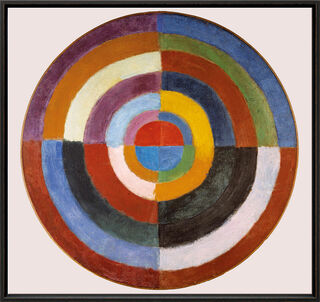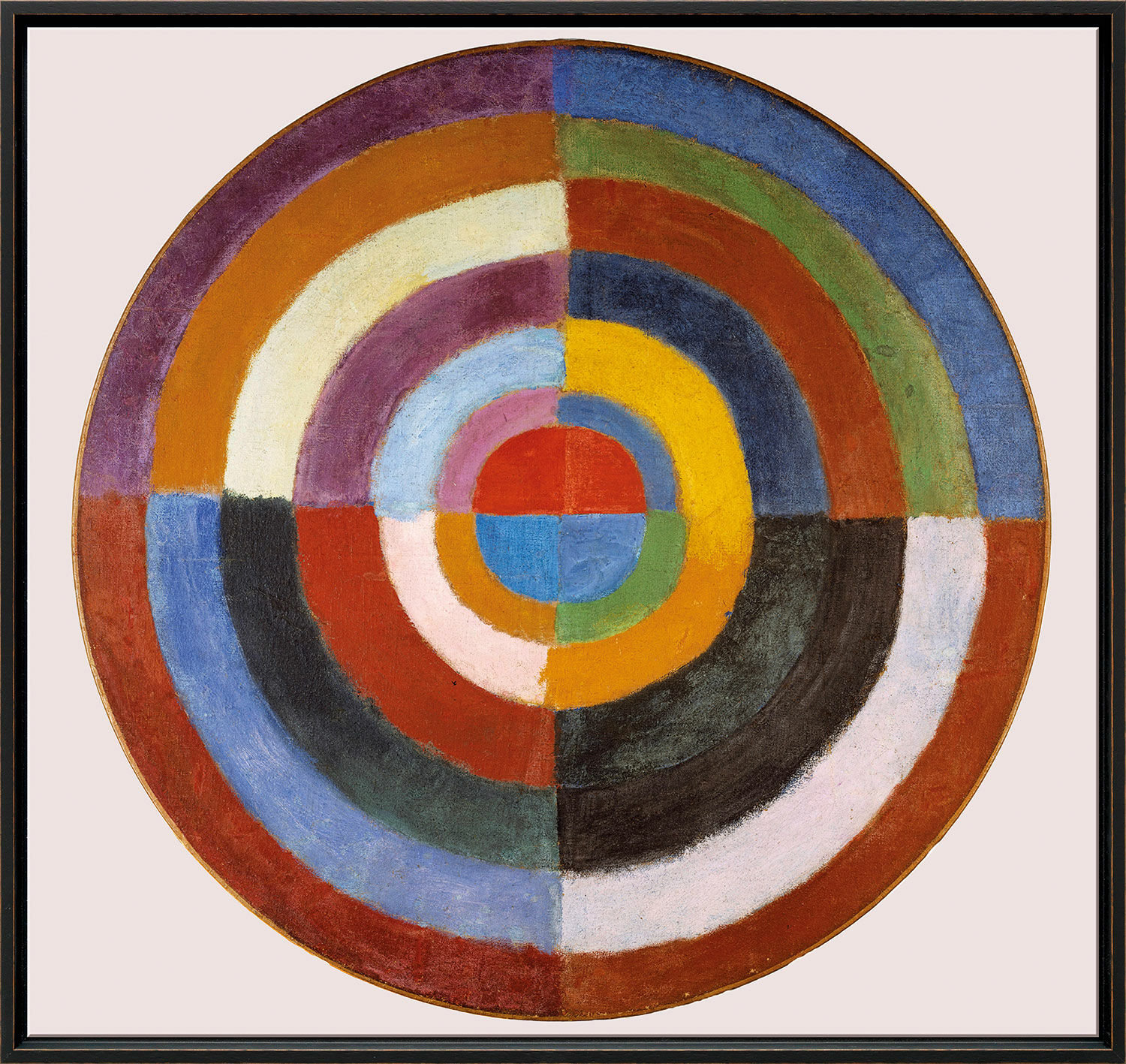Picture "Disque (Le premier disque)" (1913), framed


Picture "Disque (Le premier disque)" (1913), framed
Quick info
ars mundi Exclusive Edition | limited, 980 copies | numbered | certificate | reproduction, Giclée print on canvas | on stretcher frame | framed | size 68.5 x 72.5 cm (h/w)
Detailed description
Picture "Disque (Le premier disque)" (1913), framed
The simultaneous contrast of juxtaposed areas of colour is the decisive design feature of Delaunay's circular structure "Disque (Le premier disque)".
Original: 1913, oil on canvas, diameter 124 cm, Esther Grether Family Collection. Art Museum, Basel.
Edition transferred directly onto artist's canvas using the Fine Art Giclée process and stretched onto a stretcher frame. Limited edition of 980 copies, numbered, with certificate. Framed in a handmade, matt black solid wood frame with a shadow gap. Size 68.5 x 72.5 cm (h/w). ars mundi Exclusive Edition.
Frame configurator
Customised picture frame

Frame configurator
Customised picture frame






About Robert Delaunay
1885-1941
Inspired early on by the Neo-Impressionism of Georges Seurat, the Frenchman Robert Delaunay (1885-1941) started to paint together with the group "Der Blaue Reiter" in 1911. At the first exhibition of the artists' group from Munich, he even sold the most paintings of all.
In contrast to Kandinsky, Delaunay focused on light. His window paintings, the "Fenêtre", led him to what Guillaume Apollinaire later named "Orphism": vibrating areas of colour are shaping the form to be depicted. It was during this period that Delaunay finally rejected Abstract Cubism.
In 1912, the "Formes circulaires" which were a further development of his "Fenêtre" series, marked the beginning of abstract painting in France.
Term for paintings and sculptures that are detached from the representational depiction, which spread throughout the entire western and parts of the eastern world from around 1910 onwards in ever new stylistic variations. The Russian painter Wassily Kandinsky, born in 1866, is considered the founder of abstract art. Other important artists of abstract art are K.S. Malewitsch, Piet Mondrian, and others.
Graphic or sculpture edition that was initiated by ars mundi and is available only at ars mundi or at distribution partners licensed by ars mundi.
Giclée = derived from the French verb gicler "to squirt, spurt".
The giclée method is a digital printing process. It is a high-resolution, large-format printout on an inkjet printer with special different-coloured dye- or pigment-based inks (usually six to twelve). The colours are fade-proof, i.e. resistant to harmful UV light. They have a high richness of nuance, contrast and saturation.
The giclée process is suitable for art canvases, handmade and watercolour paper as well as for silk.






